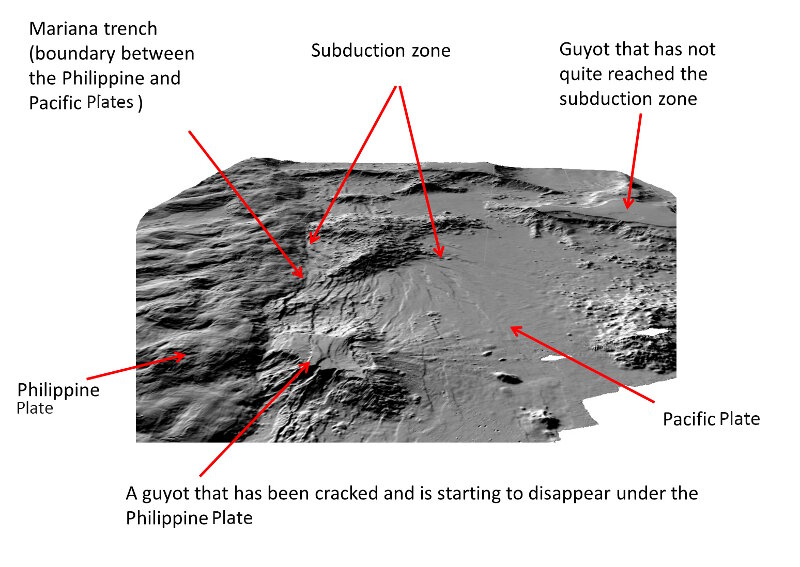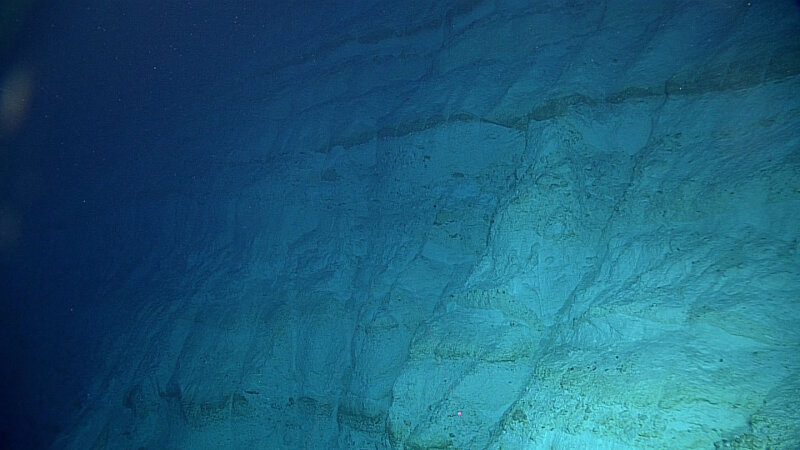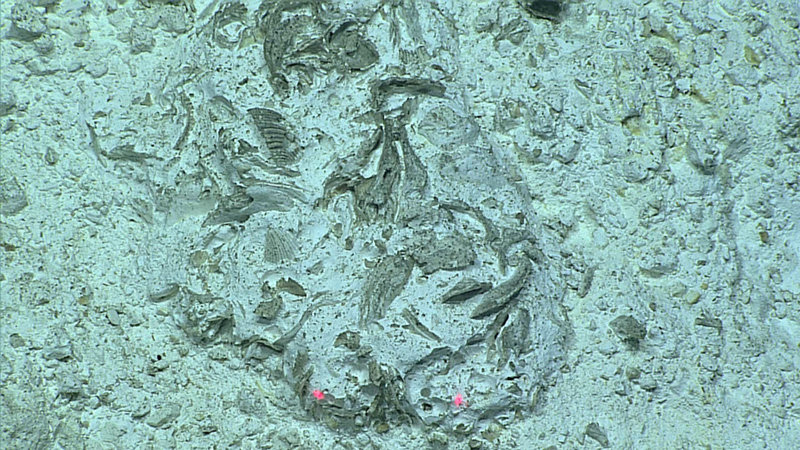
By Chris Kelley - University of Hawaii at Manoa
July 3, 2016
Guyots are flat-topped mountains in the sea. When we see mountains either on land or below the surface of the ocean, we do not think of them as having both a life and a death, but they do.
All seamounts, flat-topped or conical, are born at the bottom of the sea when lava from the mantle erupts through the seafloor. When the molten rock contacts the cold seawater, it forms weird and wonderful shapes that geologists call pillows. During several of the dives on the first Marianas expedition leg, we dove on a couple of sites where the pillows were only a couple of years old. In geologic chronology, these sites were newborns and the landscape was so alien to what most of us know that we could have been on another planet. So, we got to see what the birth of seamounts looks like.
Seamounts grow larger and upward as more and more lava erupts and more and more pillows pile up on each other. If the eruptions continue for long enough, some seamounts break the surface of the ocean and become islands. The human analogy for this period might be the teenage years through the twenties.
Then the main eruptive phase ends, growth tapers off, and the seamounts have reached their peaks in life (pun intended). It's mostly downhill from that point on, just like in humans (another intended pun). The islands erode, the seamounts start sinking, and since most of the seamounts in the Pacific formed in the tropics, coral reefs develop along the upper flanks just below the surface. These processes transform the conical islands into flat atolls. Eventually, these seamounts sink below the waves from whence they came, and when they get far enough down, they become guyots. These seamounts have now reached middle-age.
Life is good, stable, and long for these middle-aged guyots as they are slowly carried to the northwest on the Pacific tectonic plate. Unfortunately, all good things must come to an end, in this case, after about 80-100 million years, as the Pacific Plate is slowly sliding under the Philippine Plate at the Mariana trench.

Cross-section of the Mariana subduction zone, showing the relationship between the Trench, Forearc, Volcanic Arc, and Back-Arc. Image adapted from Hussong and Fryer, 1981. Download larger version (jpg, 382 KB).
About 45 kilometers from the bottom of the trench, the Pacific Plate (referred to as “old ocean crust” in the figure above) starts bending and the “subduction process” begins. In this “subduction zone,” the Pacific Plate “cracks” as it bends and so do guyot seamounts that are on the plate in that zone. The guyots could now be considered elderly. More and more cracks develop as they approach the trench until finally they start disappearing under the Philippine Plate.
The figure below shows the Mariana Trench, which is the boundary between the Philippine and Pacific Plates on the left side, guyots that have not quite reached the subduction zone on the right side, and the subduction zone in the middle. A guyot that has been cracked and is starting to disappear under the Philippine Plate is in the lower left. The guyots in the subduction zone are now dying and as they are carried further and further down and will soon disappear forever into the mantle that created them. Such is the amazing and fascinating life cycle of these seamounts.

This figure shows the Mariana Trench, the subduction zone, and guyots that have not yet reached the subduction zone. Image courtesy of Chris Kelley, 2016. Download larger version (jpg, 600 KB).
On July 3, we dove to almost 5,000 meters on one of these dying guyots, specifically right on one of the escarpments that resulted when the seamount cracked open. This was a remarkable opportunity to take a look at the inside of this seamount that we simply couldn't pass up. And we weren't disappointed.
What did the inside look like? As you can see below, it had bleach white layers of chalk that are characteristic of formations from shallow marine seas during the Cretaceous. The name for this period is actually derived from the Latin word “creta” for chalk.

A look inside the seamount reveals layers of chalk characteristic of formations from shallow marine seas during the Cretaceous. Image courtesy of NOAA Office of Ocean Exploration and Research, 2016 Deepwater Exploration of the Marianas. Download larger version (jpg, 745 KB).
Mixed into all this whiteness were layers of darker material that upon close inspection contained fossil bivalves and gastropods, some of which are shown below. Now we know what's at the center of one of these seamounts. We were looking at the historic record of the Cretaceous seas when this seamount was near the surface, something that we would normally be unable to see. It was a remarkable dive and a remarkable place to visit.

A look at the historic record of the Cretaceous seas when this seamount was near the surface shows fossil bivalves and gastropods. Image courtesy of NOAA Office of Ocean Exploration and Research, 2016 Deepwater Exploration of the Marianas. Download larger version (jpg, 1.2 MB).